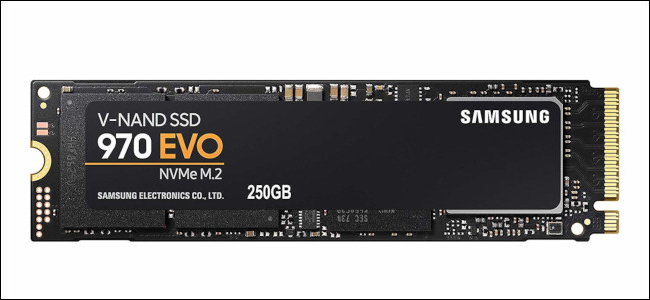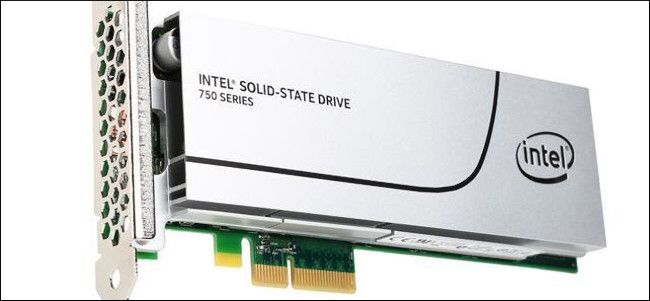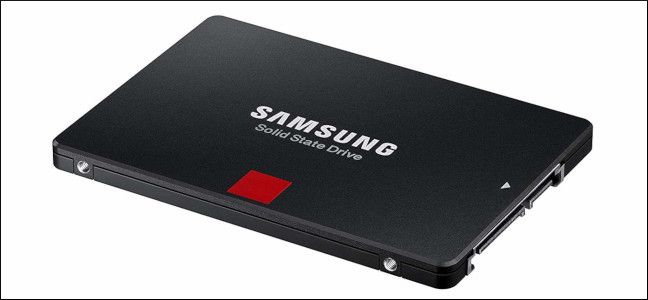The biggest upgrade you can make to your old PC is faster storage. Other components like the CPU and GPU have certainly improved in the last decade, but everyone will appreciate faster storage.
NVMe is the latest and greatest storage interface for laptops and desktops, and it offers much faster read and write speeds than older interfaces. This comes at a cost, so depending on what you use the computer for, buying an NVMe drive may not make sense.
What Are NVMe Drives?
Non-Volatile Memory Express (NVMe) is a storage interface introduced in 2013. "Non-Volatile" means the storage isn't erased when your computer reboots, while "Express" refers to the fact that the data travels over the PCI Express (PCIe) interface on your computer's motherboard. This gives the drive a more direct connection with your motherboard since data doesn't have to hop through a Serial Advance Technology Attachment (SATA) controller.
NVMe drives are much, much faster than SATA drives that have been around for years. PCIe 3.0---the current generation of the PCI Express standard--- has a maximum speed transfer of 985 megabytes per second (Mbps) on each lane. NVMe drives have been able to utilize 4 PCIe lanes, meaning a theoretical max speed of 3.9 Gbps (3,940 Mbps). Meanwhile, one of the fastest SATA SSDs---the Samsung 860 Pro---tops out at read and write speeds of about 560MBps.
NVMe drives come in a couple of different form factors. The most common of these is the m.2 stick, shown above. These are 22 mm wide and can be 30, 42, 60, 80 or 100mm long. These sticks are thin enough to lay flat on a motherboard, so they're perfect for small form factor computers and laptops. Keep in mind that some SATA SSDs use this same form factor, so you'll want to pay close attention and make sure you don't mistakenly buy the slower drive. The Samsung 970 EVO is an example of an m.2 NVMe drive.
Next is the PCIe-3.0 form factor. This is similar to a GPU and other accessories in that it plugs into any of the PCIe-3.0 slots on your motherboard. This is fine for full-sized ATX cases and motherboards but is constraining on small form factor PCs and impossible inside a laptop chassis. The Intel 750 SSD is an example of a PCIe-3.0 NVMe drive.
Should You Buy an NVMe SSD?
Whether you need the faster speeds comes down to your exact workload. But while NVMe drives are coming down in price---the NVMe Samsung 970 Pro and the SATA Samsung 860 Pro both go for about $150 at the 500 GB size---don't feel like you need to rush out and replace your SATA SSD.
A SATA SSD will already get your computer turned on in a few seconds, launch programs in a snap, and let you copy and move files relatively quickly. But if you work with a lot of huge videos---whether they be from a database, video editing, or ripping Blu Rays---the extra cost may pay itself off by letting you work faster.
In my case, I'm happy to stick with my SATA SSD until it stops working. There's not much sense in spending the money for an NVMe drive right now just so my computer comes on in four seconds instead of five, or the rare giant file I have to move transfers slightly faster. When it does come time for a new SSD, I'll go for an NVMe model, because why pay the same amount for a worse product?
Whether you still have some life in your SATA SSD or need something now, just know that NVMe drives are starting to come down in price. Upgrade and spend the money when you need to, and not a moment sooner.



